3.3: Raíces
- Page ID
- 52639
Aunque no se ven, las raíces de una planta también tienen características anatómicas especializadas que permiten a las plantas obtener nutrientes de manera eficiente y controlar las sustancias que ingresan a una planta.
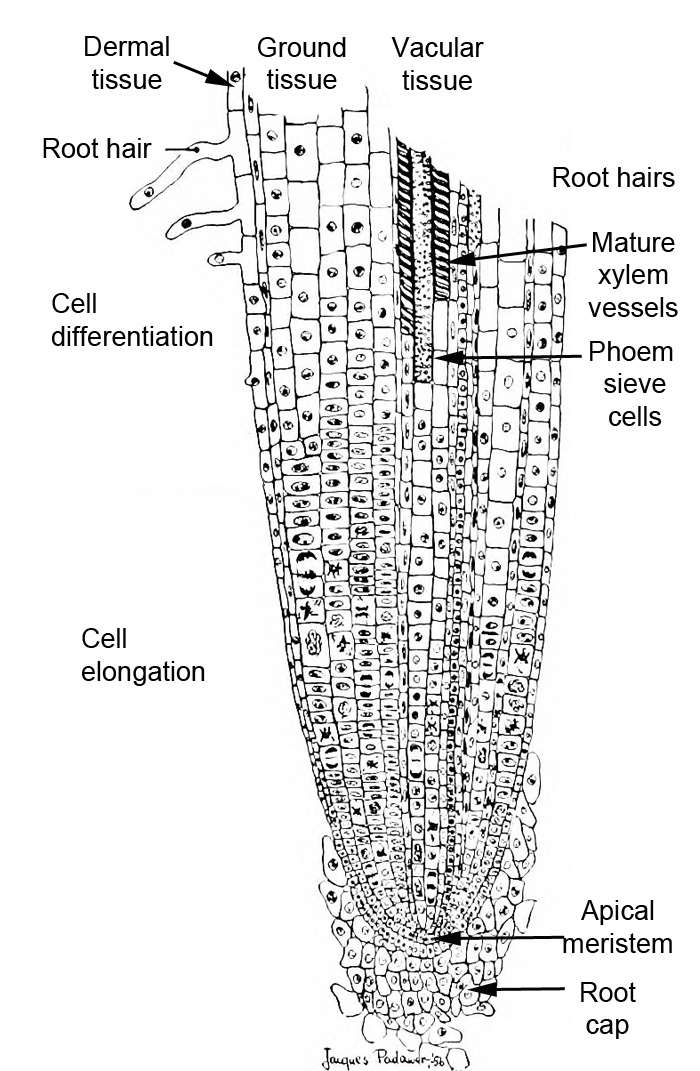
Figura 3.9. Diagrama de las estructuras y áreas de una raíz en desarrollo. (Imagen de: Marsland, Douglas. (1964) Principios de la biología moderna. Holt, Rinehart y Winston, Nueva York. Biblioteca digitalizada de la Universidad de Cornell, Sin restricciones de derechos de autor conocidas. Texto Sean Bellairs.)
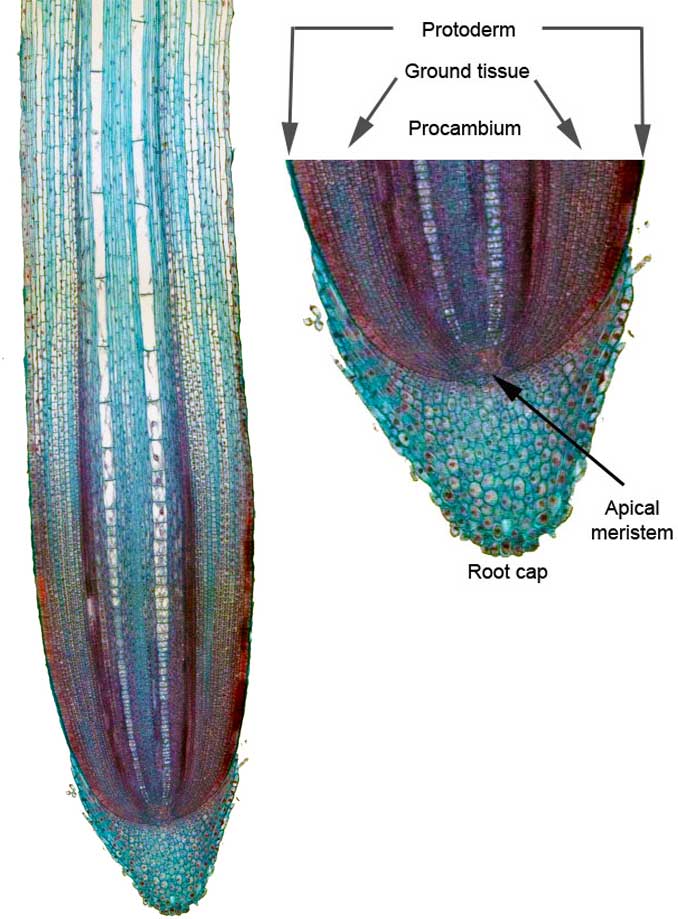
Figura 3.10. El meristemo apical y los tejidos meristemáticos que se desarrollan a partir del meristemo apical de la raíz. (Imagen Jen Dixon (atributo CC, compartir por igual). Texto y flechas Sean Bellairs.)
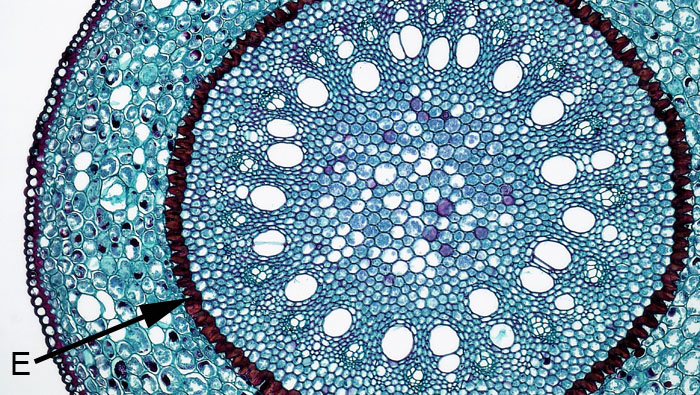
Figura 3.11. La endodermis (E) en la monocotiledónea Smilax. Las células que componen la endodermis tienen paredes que están fuertemente impregnadas de suberina, formando la tira Casparia. La suberina es un ácido graso y altamente hidrofóbico, creando así una barrera para el agua y los solutos. (Berkshire Community College Bioscience Image Library, dominio público; texto y flecha Sean Bellairs).
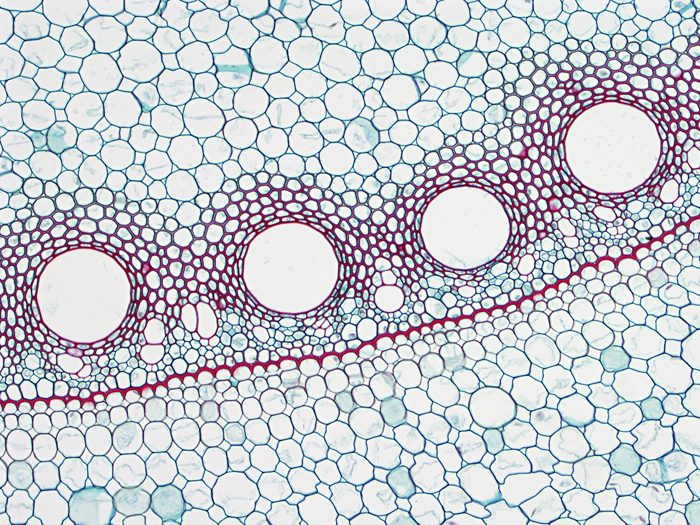
Figura 3.12. La endodermis denotada por la banda de la banda casparia teñida de rojo en Zea mays. El interior de la raíz está en la parte superior y la banda casparia se encuentra entre el tejido vascular y la corteza. (Imagen de BlueRedgeKitties (atributo CC, compartir por igual)).
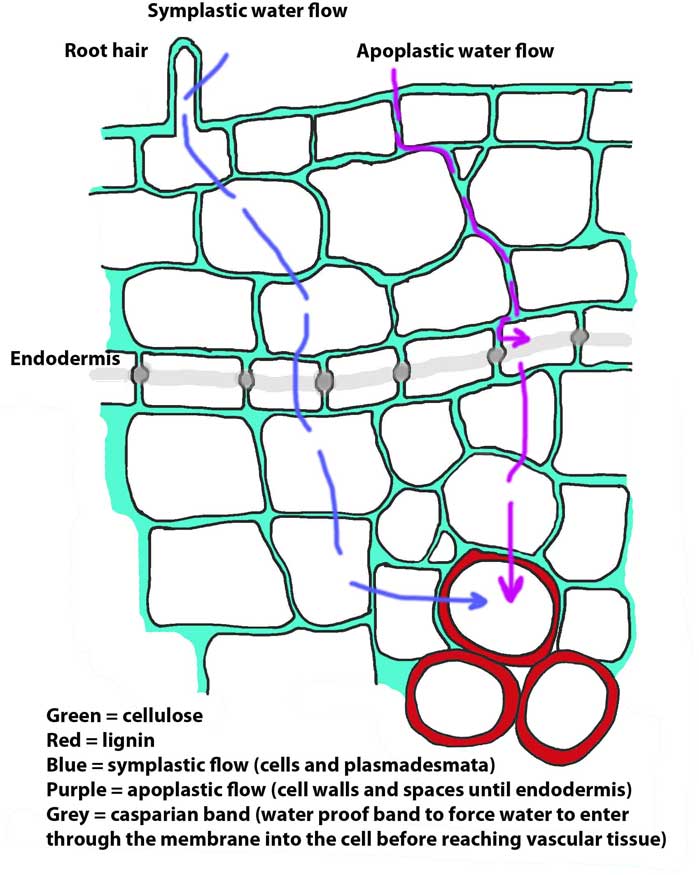
Figura 3.13. Efecto de la banda casparia sobre el flujo de agua entre la corteza y el xilema. En la corteza el agua y los solutos pueden moverse simplásticamente (a través de las células vivas) o apoplásticamente (a través de las paredes celulares de celulosa no viva y los espacios intercelulares. La banda casparia obliga a todos los movimientos del agua hacia los tejidos vasculares a moverse a través de las membranas celulares (Diagrama de Sean Bellairs, atributo CC, compartir por igual).


